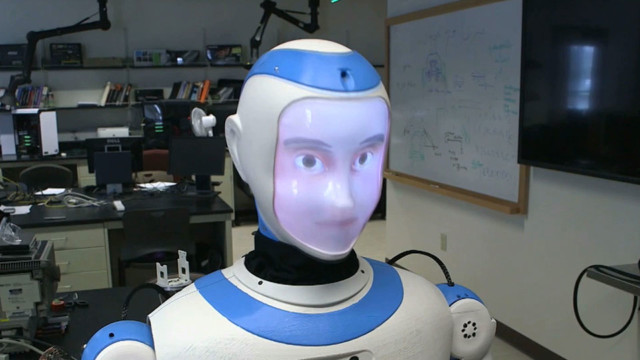Robots are playing an increasing role in our lives. They’re a common sight in factories, and they’re taking over some of the tedious housekeeping chores at home.
Now they’re moving beyond the mundane, like becoming companions for senior citizens.
CGTN’s Hendrik Sybrandy reports.
“I thought it was intriguing and something I might want to try,” said Anna Fine, a resident at Kavod Senior Life Center in Denver, Colorado. Fine was recently given an interactive, music-playing robot named Ryan for a temporary try-out.
“I can ask him questions, and he talks back to me,” said Fine.
Ryan is a product of a robotics laboratory at the University of Denver where, using artificial intelligence and emotional recognition algorithms, they’ve created social robots.
“Social robot is a robot that connects to you and supports you socially and emotionally,” Mohammad Mahoor, associate professor of Computer Engineering at the school said. Mahoor and his students developed the machines as a way to help often lonely senior citizens, including those suffering from depression and Alzheimer’s Disease. They’ve done several pilot studies already. He said the results are good so far.
“We gave every subject a robot, so it was like a friend, a companion that stayed in the room, and they really loved interacting with the robot,” Mahoor said.
The robots come with cognitive games to keep the human brain active. They’re programmed to offer reminders. And they can read people’s emotions through their facial expressions and actually mimic them.
“The robot can just talk to you, respond to whatever topic you would like to talk to,” Howard Feng, a graduate student at D.U. said.
Mahoor believes there’s a real need for companion robots like Ryan. The U.S. Bureau of Labor Statistics estimates more than a million additional caregivers will be needed to care for elderly Americans in the next five years. While no substitute for humans…
“Absolutely not,” Mahoor insisted.
He said social robots, which have now sprouted functioning arms, are good at performing repetitive tasks. The concept has been popularized in the T.V. show “Humans.” The PARO therapeutic animal robot has been extensively used in Japan. Mahoor predicts his robots will be available on a subscription basis and be commercialized soon.
“I believe that these robots are going to be everywhere in assisted living facilities, in senior living facilities,” he said.
Anna Fine never expected to share a room with a robot but is giving it a whirl.
“This will be an interesting experiment,” she said, chuckling. “We’ll see how it goes.”
 CGTN America
CGTN America

